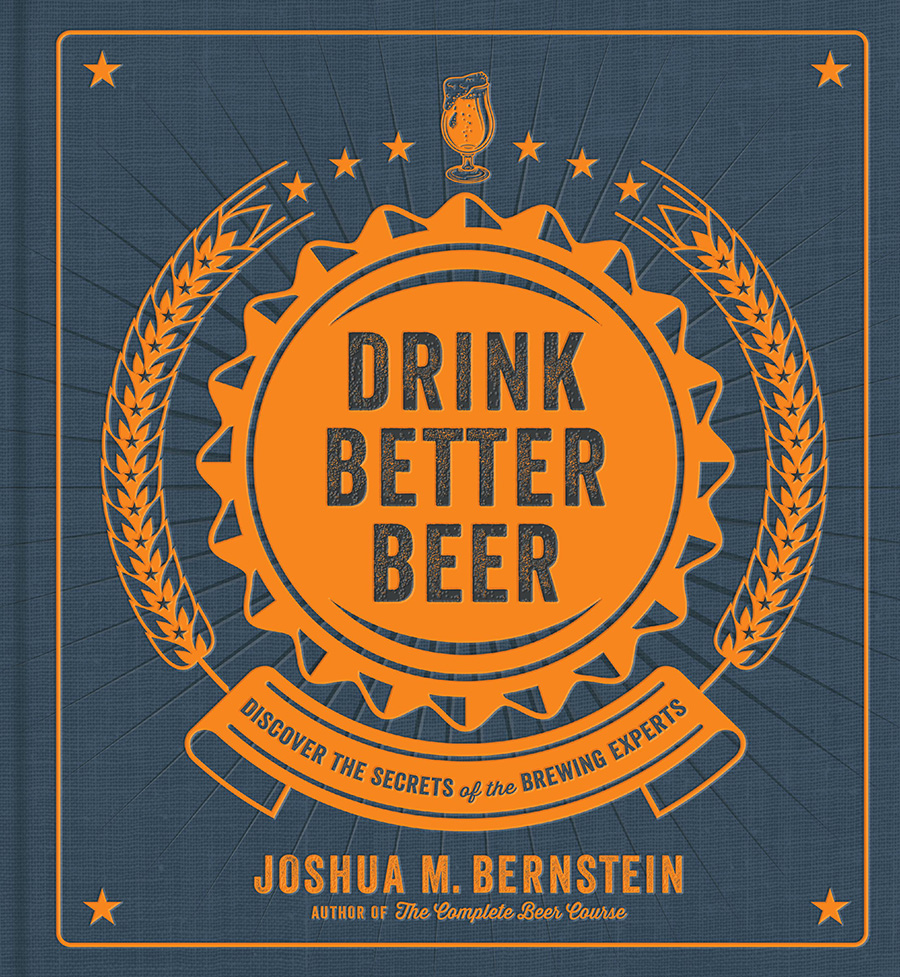We recommended our favorite new beer book in the gift guide. Now we’re taking a more in depth look with a discussion with Drink Better Beer‘s author Joshua Bernstein. Joshua is a Brooklyn-based beer, spirits, food and travel journalist, as well as an occasional tour guide, event producer and industry consultant.
Since 2000, he’s written for scores of newspapers, magazines and websites, including The New York Times, Bon Appétit, Men’s Journal, New York, Saveur, Wine Enthusiast and Imbibe, where he’s a contributing editor in charge of beer coverage.
Joshua is the author of five books, including Brewed Awakening, The Complete Beer Course, Complete IPA, Homebrew World, and his newest book Drink Better Beer, published in September 2019. He is an expert on beer, but he highlights a range of other beer experts in this new book including competition judges, beer consultants, and master brewers. Together they’ll help you make sense of the ever changing and expanding world of craft beer.
What’s an experience you had with one of the people featured in the book that stands out?
Hands down, I was blown away by chatting with Dr. Hoby Wedler, a blind sensory specialist. Our eyesight drives so much of what we take in with beer, from the way it looks to how it’s poured, the label, the foam and, well, the Instagram pic. But our eyesight is not our trustiest sense. We can see the moon, Dr. Wedler said, but do we know what the moon smells like? What it feels like to walk there? Same goes for beer. Our eyes might draw us to a beer, but what’s more important is the fragrance we sniff, the liquid that passes over our lips and slides into our stomach. We need to pay attention to all forms of sensory intake.
It’s a gorgeous book. Can you tell us about the design process, and about how you rounded up the great photos?
As I often tell folks, nobody ever picks up a book and says, “My, those are are beautiful words!” I wanted to the book to look as good as it read, which meant a few things. First, I created the book’s text architecture—chapters, sidebars, profiles, boxes, etc.—that the designer used to create a layout. Then I reached out to first-rate photographers to complement the copy with great imagery, a winning one-two-three combo of words, design and imagery.
Has the way you personally see and interact with beer changed since you started writing this book?
I’ve been reminded that no two beer drinkers are alike. We all have different entry points into beer—Busch Light at 17 for me, jumping on a backyard trampoline in suburban Ohio—while other folks might be starting off with a hazy double IPA, or maybe a pastry stout of some sort. Are you happy with the beer you’re drinking? Great! That’s what matters, no need to yuck someone’s yum. We all sit at different points on beer wheels forever spinning around to different flavors, styles and experiences. I might have spun several 360s, but that doesn’t make me any better or worse—or worthy of judging you. And no matter what beer you’re drinking, I’m sure we can find a common ground for conversation.

You worked with loads of beer experts for this book including doctors and master cicerones. Who really blew you away with their knowledge?
Instead of a single person, I was struck by Allagash Brewing’s sensory department. I spent a day at the brewery in Portland, Maine, sitting through Allagash’s rigorous sensory panels that ensure each and every beer tastes great, time and time again, with no off flavors, unwanted aromas, infection or carbonation that’s far too vigorous. As a writer, it’s easy to simply celebrate the brewers, but it’s the behind-the-scenes team team that makes a brewery hum along at a high level.
When talking with the beer experts featured in the book, what was your biggest “ah ha moment”?
Ten years ago, beer drinkers were obsessed with bitterness—the more IBUs the better, double IPAs abrasive enough to darn near scrape the enamel off your teeth. IPAs have since evolved to show their softer, fruitier side, but there’s been another kind of insidious creep: the dry hop. I spoke to Oregon State University’s Dr. Tom Shellhammer, one of America’s top hop experts, about brewers doubling, tripling and even quadrupling their dry-hopping regimen, seeking to boost flavor and aroma. That’s awesome in theory. In reality, adding all that plant material can cause big problems. Did you know that hops contain fermentable sugars that yeast can feast upon, elevating alcohol percentages and potentially creating unwanted off flavors, such as diacetyl? Yeah, me neither. Excess doesn’t always equal excellence, especially with IPAs.
What’s changed in the beer world since you hit send on the final draft of the book?
More breweries closed, more breweries were purchased. Could I have predicted that a Japanese-owned company would buy Colorado’s New Belgium? Heck no. But nothing surprises me, even as hard seltzer continues to bubble across the country, slushy machines slowly churning inside brewery taprooms snuggled inside strip malls, stouts drawing inspiration from the far reaches of dessert menus. Everything is fair game, which makes for a wild, and wildly flavorful, future.



You must be logged in to post a comment.